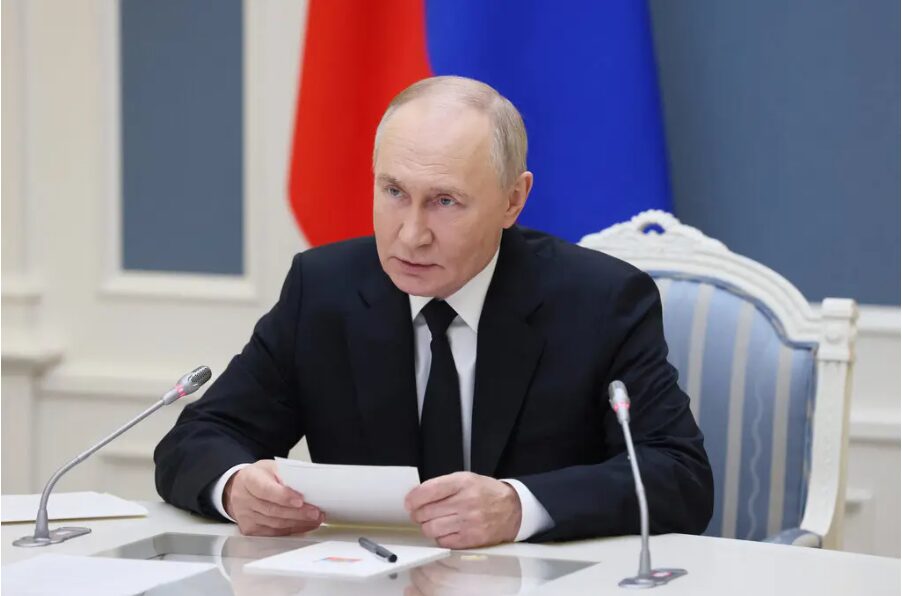The most dangerous phase of the Ukraine war has just begun. Russia’s nuclear forces are officially in action now. Vladimir Putin on Tuesday green-lighted new exercises of Russia’s nuclear forces, the second such drill within two weeks.
The exercise involved Russia’s full nuclear “triad” of ground, sea, and air-launched missiles.
Russia also launched a Yars intercontinental ballistic missile or the ICBM from northwest Russia to Kamchatka, a peninsula in the Far East.
Sineva and Bulava ballistic missiles were fired from submarines, and cruise missiles were launched from strategic bomber planes.
Russia defence ministry said that all the missiles reached their designated targets.
In a video clip, Putin can be heard saying, “We will work out the actions of officials to control the use of nuclear weapons with practical launches of ballistic and cruise missiles.” Putin declared nukes must be kept ready for use; however, he added that these weapons would be an “extremely exceptional measure.”
The Russian president is the primary decision-maker on Russia’s nuclear arsenal. Putin last month announced significant changes in Russia’s nuclear policy. The new doctrine says that any nation’s conventional attack on Russia that is backed by a nuclear power will be considered a joint nuclear attack on his country.
In October, Moscow was said to be “fully ready” for exploding a nuclear bomb at “any moment” in the Arctic. According to a report in the Daily Mail, the director of an old Soviet test site in the Novaya Zelmlya archipelago insisted that testing facilities are ready and can be used immediately ‘if the order is given’.
Western media often portrays Vladimir Putin as the main troublemaker and threat to peace in Eastern Europe. But today, let’s look at a different view: Maybe Putin’s actions are just responses to moves the United States has made over the years.
The story began back in August 2019. At that time, the U.S. decided to back out of the 1987 Intermediate-Range Nuclear Forces Treaty, which was an agreement between the U.S. and the Soviet Union (and later, Russia) to limit certain types of nuclear weapons. After this, Russia saw this step as a threat and reacted by announcing that the treaty was “officially over.”
Then, more tension built up in October last year. Russia declared it will withdraw from the Comprehensive Nuclear Test Ban Treaty, a pact meant to ban nuclear weapons testing. It’s worth noting that this treaty was never approved by the US.
There was a time during Donald Trump’s presidency when the US attempted to have discussions with Russia about controlling smaller, “non-strategic” nuclear weapons. However, Russia was not interested because they were concerned about U.S. nuclear weapons that were placed in Europe.
Recently, things took another serious turn. The Joe Biden administration updated a critical document called the “Nuclear Weapons Employment Planning Guidance.” This update now considers possible nuclear threats coming not just from Russia, but also from North Korea and China, which Putin saw as crossing one of his “red lines.”
Looking at these actions, one can see why Russia might feel pressured to respond. From Russia’s perspective, Putin’s actions might not be about causing trouble but reacting to choices made by the United States.
